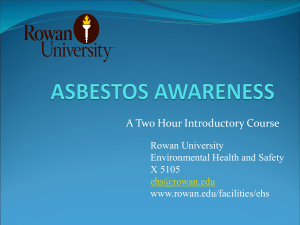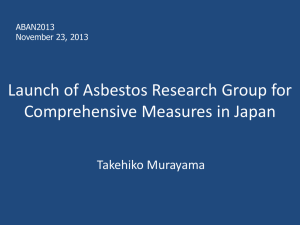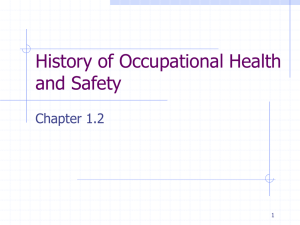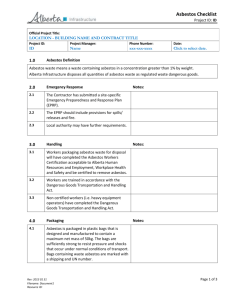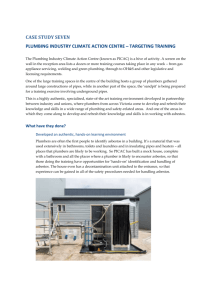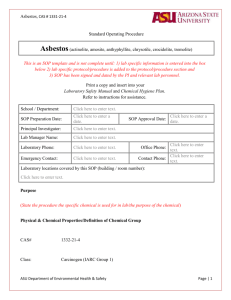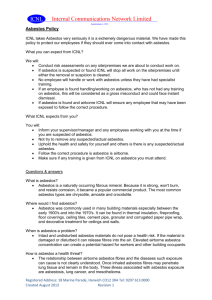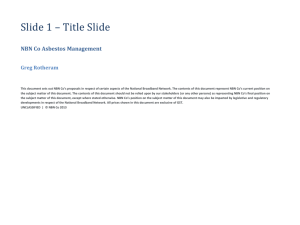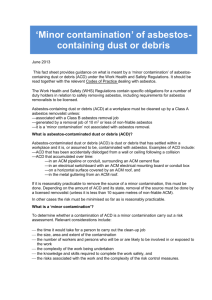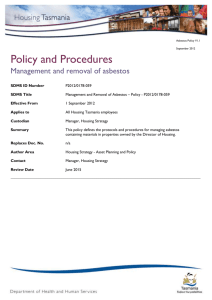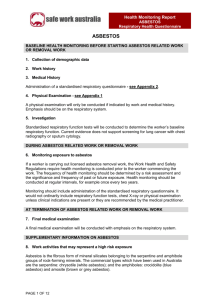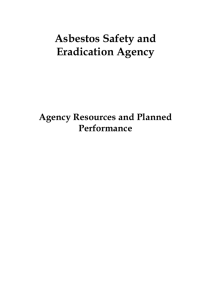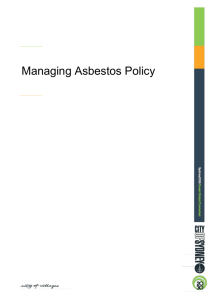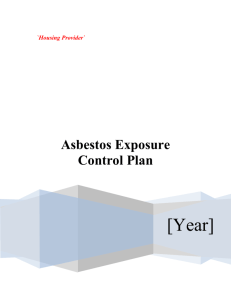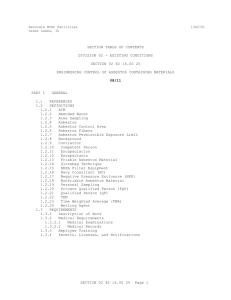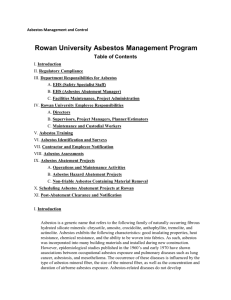Appendix A - Kent Police
advertisement
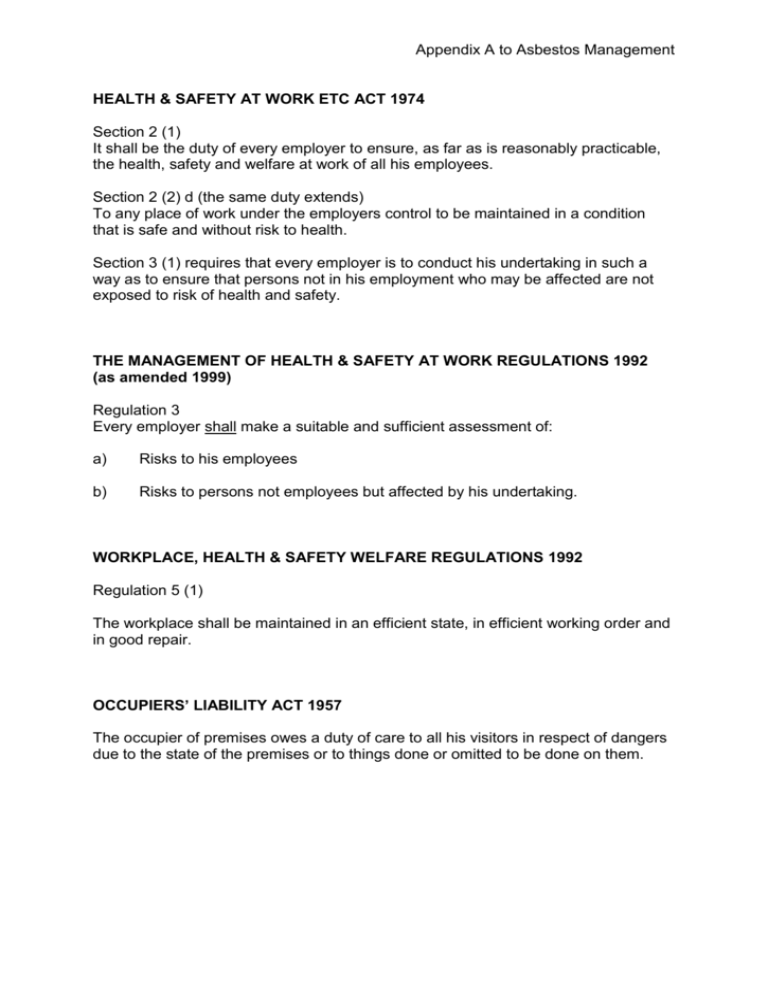
Appendix A to Asbestos Management HEALTH & SAFETY AT WORK ETC ACT 1974 Section 2 (1) It shall be the duty of every employer to ensure, as far as is reasonably practicable, the health, safety and welfare at work of all his employees. Section 2 (2) d (the same duty extends) To any place of work under the employers control to be maintained in a condition that is safe and without risk to health. Section 3 (1) requires that every employer is to conduct his undertaking in such a way as to ensure that persons not in his employment who may be affected are not exposed to risk of health and safety. THE MANAGEMENT OF HEALTH & SAFETY AT WORK REGULATIONS 1992 (as amended 1999) Regulation 3 Every employer shall make a suitable and sufficient assessment of: a) Risks to his employees b) Risks to persons not employees but affected by his undertaking. WORKPLACE, HEALTH & SAFETY WELFARE REGULATIONS 1992 Regulation 5 (1) The workplace shall be maintained in an efficient state, in efficient working order and in good repair. OCCUPIERS’ LIABILITY ACT 1957 The occupier of premises owes a duty of care to all his visitors in respect of dangers due to the state of the premises or to things done or omitted to be done on them. Appendix A to Asbestos Management ENVIRONMENTAL PROTECTION ACT Defines contaminated land as: “any land which appears to the local authority in whose area it is situated to be in such a condition, by reason of substances, on or under the land, that: (a) Significant harm is being caused or there is a significant possibility of such harm being caused, or; (b) Pollution of controlled water is being or is likely to be caused.” THE CONTROL OF ASBESTOS REGULATIONS 2012 For regulatory purposes in Great Britain, work with asbestos materials is strictly controlled by the Control of Asbestos 2012 (CAR). These CAR apply to all work with asbestos. Before starting any work with asbestos, or where asbestos is present, CAR requires an assessment to be made by a competent person with respect to the likely exposure to employees. There is no known ‘safe level’ of exposure to asbestos and the CAR require: Regulation 8 – Prevention or reduction of exposure to asbestos. Regulation 12 – Duty to prevent or reduce the spread of asbestos. The CAR specifies a Control Limit for work with asbestos where an assessment identifies that either the Control Level will be exceeded. This triggers implementation of further regulations of the CAR. A Control Limit is a respirable concentration of asbestos in air averaged over any continuous four hour period to which employees must not be exposed unless they are wearing suitable respiratory protective equipment. There one control limit for both Amphibole (e.g. Amosite and Crocidolite) and Serpentine (Chrysotile) asbestos of 0.1 fibres per millilitre. It should be noted that the concentrations of asbestos detailed above relate to concentrations in the atmosphere when measured or calculated by a method approved by the Health and Safety Commission i.e.: HSG 248 – The Analysts Guide Sampling and Evaluation by Phase Contrast Optical Microscopy (PCM). Such air sampling and analysis should be carried out by laboratories which can demonstrate they conform to EN45001 by accreditation with a recognised accreditation body (as now required by Regulation 15A of the current Control of Asbestos at Work Regulations). Appendix A to Asbestos Management In the experience of Riverside Environmental Ltd, the first priority is to prevent the liberation of asbestos fibres to air. This is achieved by: Identification as to the type, condition and extent of the asbestos. Containment by encapsulation, enclosure or abatement. Unless abatement is undertaken the asbestos, whether encapsulated or enclosed should be labelled and the area barriered to prevent uncontrolled access. Airborne fibre levels in concentrations greater than 0.01 f/ml should be investigated to identify their source.






